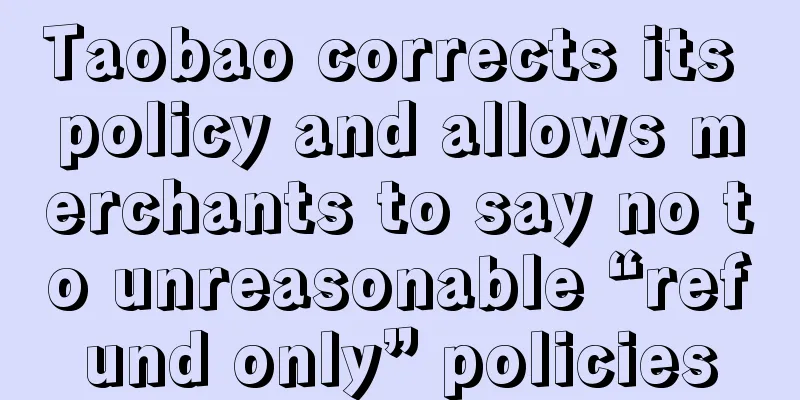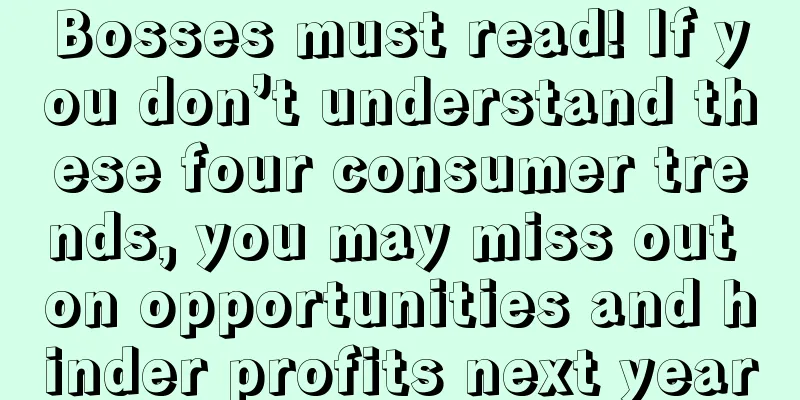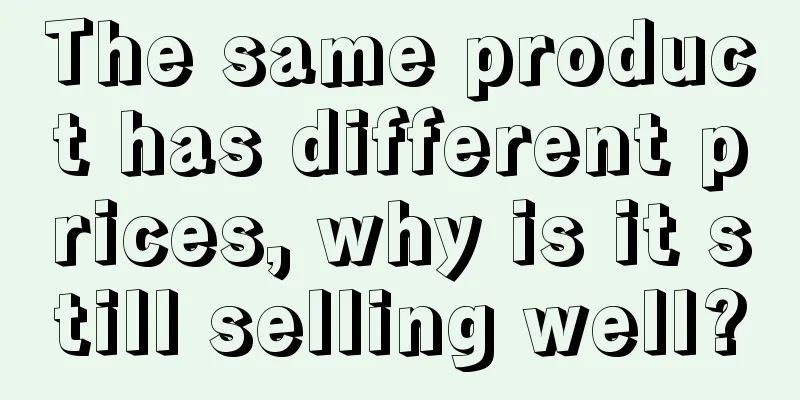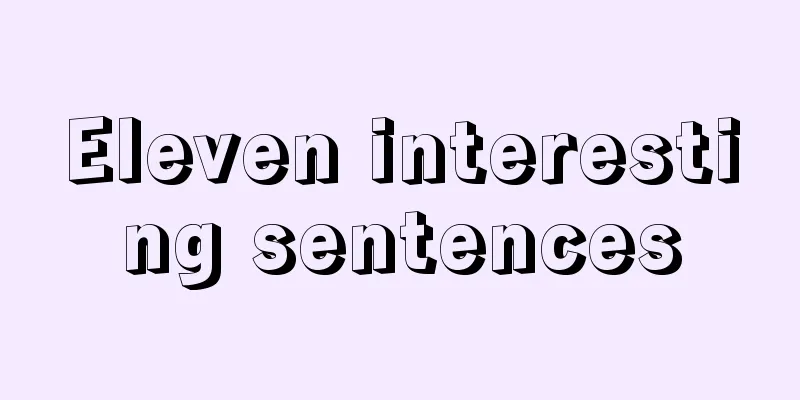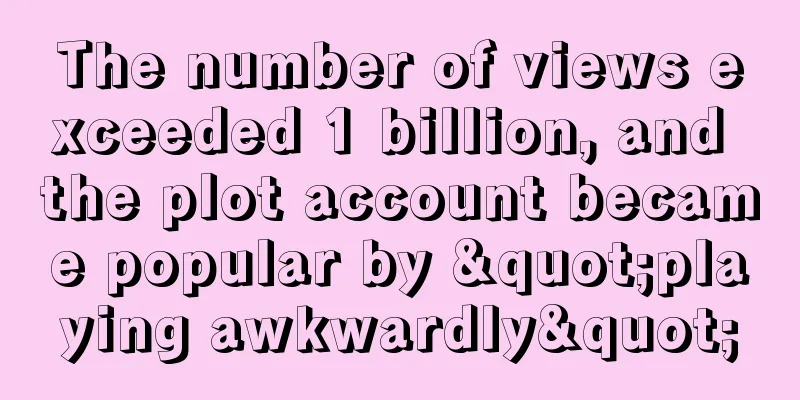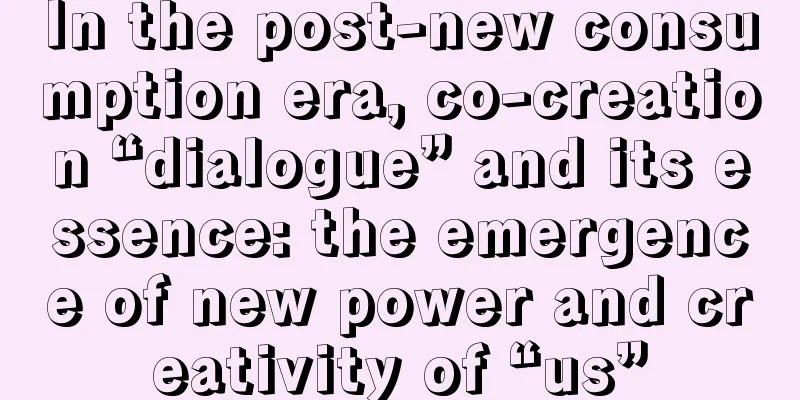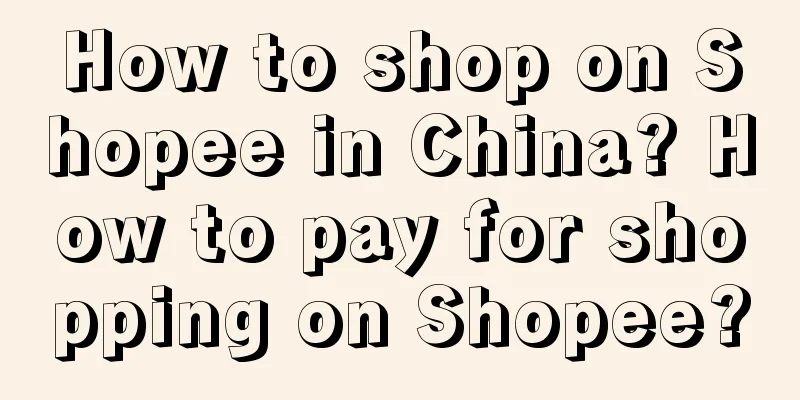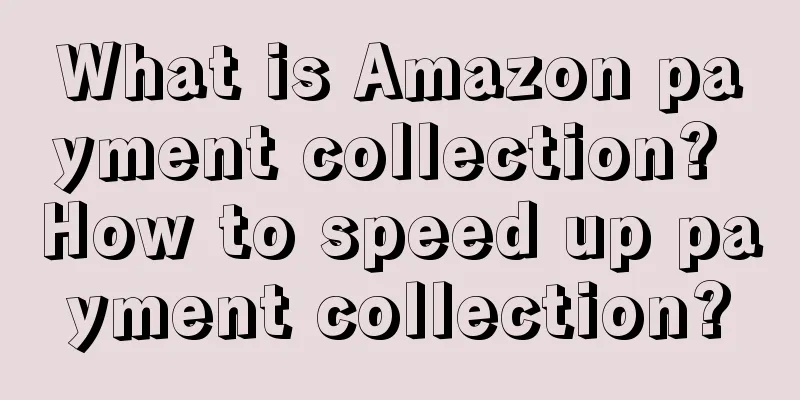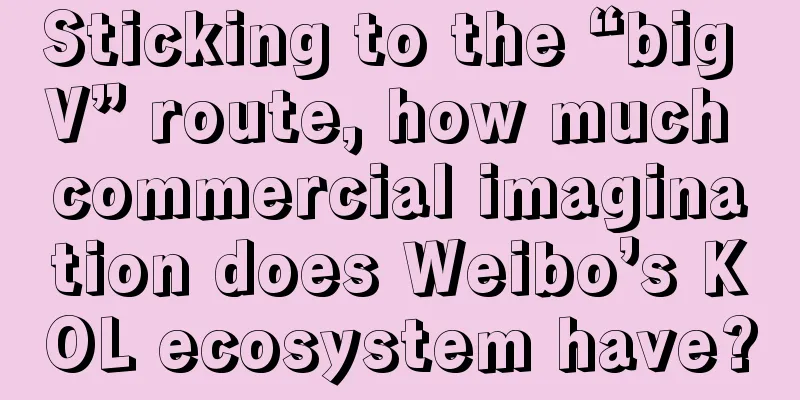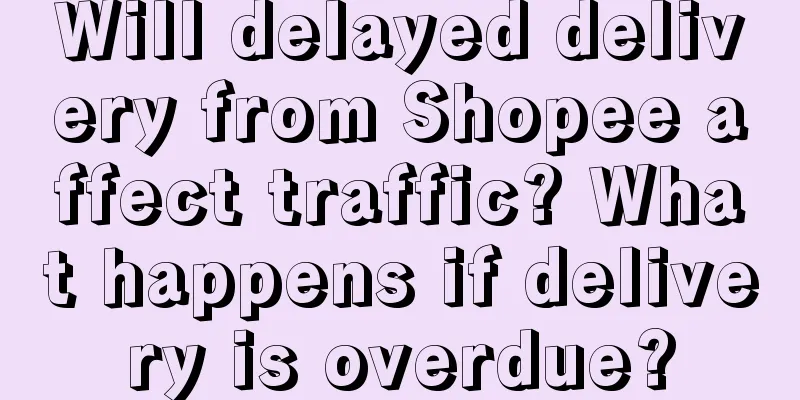Brand No. 1: How to write a sales pitch that hits the mark
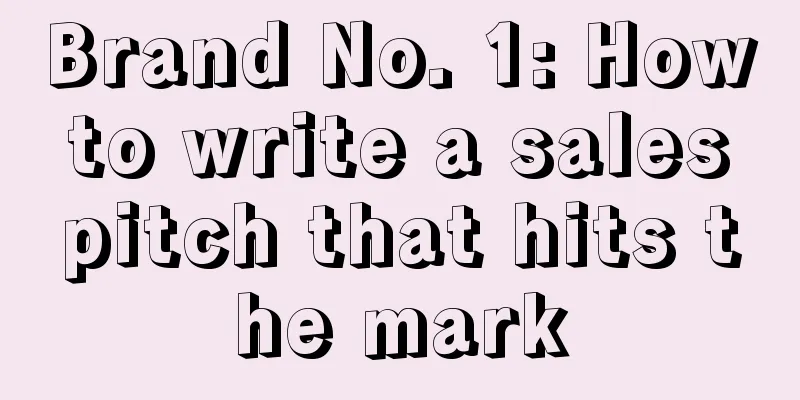
Marketing slogans must first be correct, secondly they must be shouted loudly, and also they must be shouted for a long time. Whether it is right, loud, or long, if it is right, loud, and long, it will naturally turn from virtual to real. If there is a universal truth in advertising, it is repetition, repetition, and repetition again. Only by repeating it tirelessly can it become familiar to the audience. 1. What is a language nail?It is the phrase that penetrates the mind of consumers. For Wanglaoji, it is: afraid of getting angry; for Head & Shoulders, it is: anti-dandruff, Head & Shoulders; for Robam range hoods, it is strong suction. For your brand, what is the phrase that penetrates the mind? Since it is a word that penetrates the mind, then this sentence must first be in line with the mind, and secondly, it must mobilize common sense. For example, the "fire" in "fear of getting angry" is in line with the mind, and because it is in line with the mind, it can mobilize common sense. What is in line with the mind and what mobilizes common sense, if we use the words of Freud and Jung, it is: consciousness and collective unconsciousness. The collective unconscious refers to the long-term accumulation of universal psychological experience of human beings from generation to generation since primitive society. "It is neither generated from personal experience nor acquired by individuals, but is innate." This is a field of impersonal images that are preserved in the entire human experience and are constantly repeated. 2. From the collective unconscious to the archetype, what is the archetype?Let me give you an example. For example, there is the "wise old man" archetype, which represents wisdom and is the image of wisdom. Zhuge Liang in Romance of the Three Kingdoms and Wu Yong in Water Margin are archetypes in literary works (of course, they are also archetypes of the collective unconscious - the wise old man). Following the archetype line of thought, you can find similar images in many works (such as in Star Wars). Of course, there are many other "archetypes", such as "child", "mother", etc. Archetypes are "universal images that have existed since ancient times" and were formed in the most primitive stage of human beings. Archetypes are preserved as a kind of "racial memory", so that every individual has a series of images and patterns innately. He found that similar or even almost identical images and patterns would exist or appear in the minds of individuals with completely different cultural and social backgrounds, and he used archetypes to explain all of this. From Jung's collective unconsciousness to archetypes, the significance for brands is: Archetypes are manifestations of the collective unconscious that have not been directly perceived in the long-term psychological accumulation of human beings. Therefore, they can enter the entire corporate brand strategy as a potential unconscious, discover archetypes, awaken the original force, and form a unique brand business culture of spells - symbols (visual hammers), spells (linguistic nails). The mental anchor is in Jung's archetype theory. The brand's symbols (visual hammer) and spells (linguistic nails) must be externalized (logo, slogan), and simultaneously presented and implicitly combined into a "primitive image", thereby stimulating the collective unconscious, awakening the archetype, and inspiring consumers' perception of the Force and spontaneity. 3. Distinguish between differences and benefitsAdvertising slogans can be roughly divided into three categories:
The core of advertising slogans is to convey effective brand information, which is about brand positioning. Emotional and unique value propositions are not bad, but they are wrong. Marketing seems to be a job that can be done with just a mouth. In fact, there is no such thing as good or bad, only whether or not. Laymen watch the excitement to see whether it is good, while experts watch the door to see whether it is right or wrong. Guo Degang said: In the crosstalk business, there is no one who is better than anyone else, there are only those who can and those who can’t, and the same is true in the marketing business. In addition to slogans (text, sound), there must also be visuals. Whether it is a poster, a doorhead, or a media advertisement, only text and sound are not enough, and visual enhancement is essential - a gentleman will do everything he can to achieve the highest good and beauty. That is: the presentation of text, the expression of sound, and the enhancement of vision are all indispensable. Here we need to talk about the four elements of advertising slogans: text, voice, sound and music. Words are dead, like a tiger with wings, which moves like a tiger, very fierce and durable. If you want words to have legs (from a tiger to a tiger), and to move on their own, you need to give them (words, characters) legs of sound and voice, so that the words will be familiar and spread quickly. Voice is a rhythmic sound, and a word that cannot be pronounced is a "dead" sound, without any sound. The repetition of text is boring, but with music you can repeat it 100 times - without being boring. 4. Voice Nail: Distinguishing between Differences and BenefitsThe point of difference is what makes you different from others, and it is the real distinction between you and your competitors, while the point of benefit is the benefit that your point of difference brings to consumers. When the two are not consistent, you will find that consumers' perception of the brand is often focused on the point of difference rather than the point of benefit. This is - different is better than better.
Especially in the early stage of the category (early stage of the market), consumers have category awareness but brand awareness is relatively low. This stage is a typical case of communication winning over no communication, USP winning over brand image, and of course, the final outcome is that differentiation wins over no differentiation. For example, Chubang is showing off here, appealing to the two most important points of soy sauce for consumers: "delicious taste" and "natural safety". This USP advertising is effective. Chubang's growth rate in recent years has also been faster than that of the soy sauce brand leader Haitian Soy Sauce, ranking second. The positioning is delicious taste, and the differentiated production process (natural sun-drying for 180 days) is the differentiation slogan of its positioning. This is similar to the "peeled tomatoes for ketchup" made by Trout and Reese in "Positioning". In addition, one of the ten types of differentiation Trout mentioned in his speech in China is "production method". Page 49 of "Two-Hour Brand Literacy" clearly states: "After having brand positioning, USP can also become the most differentiated slogan for communication positioning." In the same period, Haitian was still using the brand image advertisement of "the taste of happiness" in its advertising appeal. It is not difficult to understand that the premise of phased effectiveness is that the opponent is making mistakes. Later, Haitian also began to follow Chubang in its publicity, but did not find an effective advertising appeal point. In the final analysis, it was still because of the lack of understanding of category characteristics, differentiation, and consumer cognition. In any case, eventually you have to occupy a characteristic, and this characteristic is your point of differentiation. The benefit point is the sense of value given to customers by occupying the characteristic and creating differences (this sentence is a bit confusing, it is recommended to read it 2 or 3 times). Haitian vs. Chubang: The soy sauce category market is a big market. If you can start with the new characteristics of the category, there are still many opportunities. Chubang has the characteristics of freshness and the USP of 180 days. Haitian cannot follow suit, but must fight in the opposite direction and in a roundabout way. If Haitian imitates and follows suit, the result can only be to strengthen consumers' perception of Chubang. Moreover, it is difficult for Haitian to surpass Chubang's dramatic expression: "Just dry it here for 180 days." For example, Yuanshai. The concept of Yuanshai here is the characteristics extracted from the category and consumer cognition. Focusing on the characteristics of Yuanshai, find the difference and then express the USP dramatically. Author: Houshan Keju, Source: WeChat public account “Lao Gao Business and Brand”. |
<<: This is how annual targets should be set, not by guesswork.
>>: Some observations and thoughts on Douyin's live broadcast of women's clothing
Recommend
Is Amazon purchasing reliable? How is Amazon?
As people's living standards improve, their de...
Betting on Olympic champions is a "compulsory course" for brand globalization
In the article "Betting on Olympic champions,...
The rise of KOS matrix! 7000 words to explain how to move from public domain to private domain
Last year, when Xiaohongshu promoted buyer culture...
Momo Live’s “connected screen interaction” gameplay has become popular. How can it help anchors increase traffic and revenue?
What is the "interactive screen" live br...
Amazon considers launching medical platform in Japan
It is reported that Amazon is considering entering...
Watch the Double 11 opening: major anchors compete with each other, and e-commerce platforms compete with low prices
The 15th "Double Eleven" shopping festiv...
How to set up automatic reply in Shopee chat? Things to note when setting up
Shopee customer service receives a large number of...
Which African cross-border e-commerce platform is better? How to choose?
Now many domestic e-commerce merchants are very op...
PUSH
In the era of mobile Internet, PUSH push, as an ef...
After mining millions of data points, we found out what consumers really think about Double 11
As the Double 11 Shopping Festival enters its 16th...
2022 Christmas Creative Review [Part 2]
Christmas is coming, and we have seen Christmas bl...
What is the appropriate advertising rate on eBay? What are the fees eBay charges?
eBay is a relatively fast-growing cross-border e-c...
What are the international payment methods? Introduction to eight common international payment methods
To do cross-border e-commerce business, you need t...
Big anchors are losing the low-price machete|Juchao
Big anchors used to use the "lowest price on ...
Can individuals do cross-border e-commerce? Is it easy for individuals to do cross-border e-commerce?
The advantage of cross-border e-commerce is that i...
